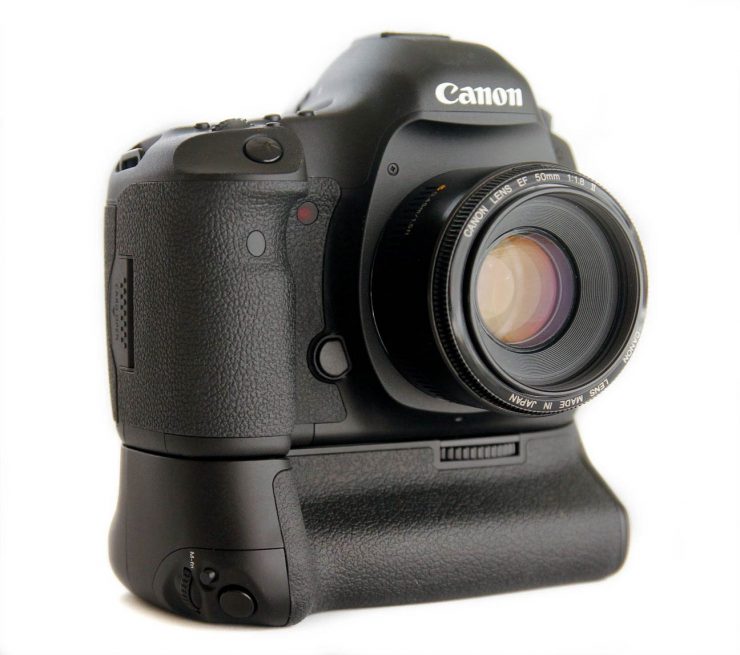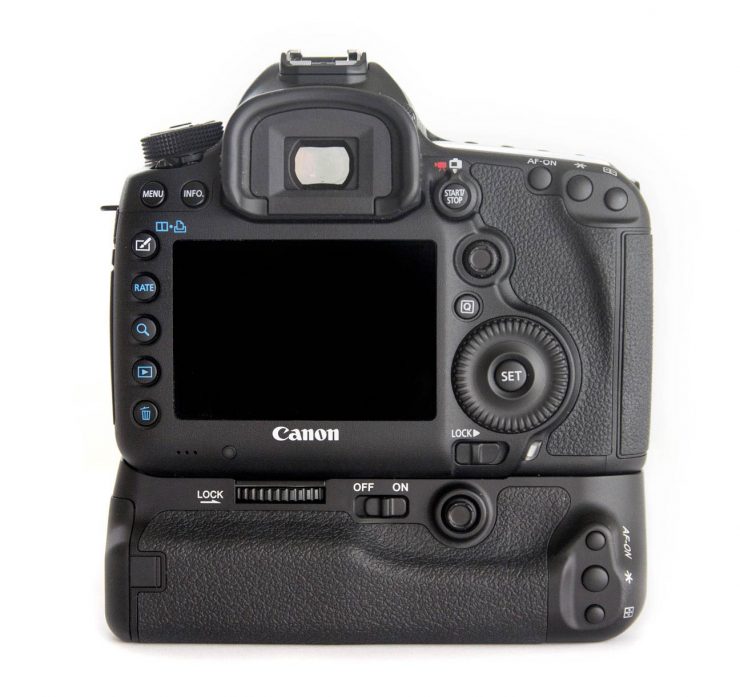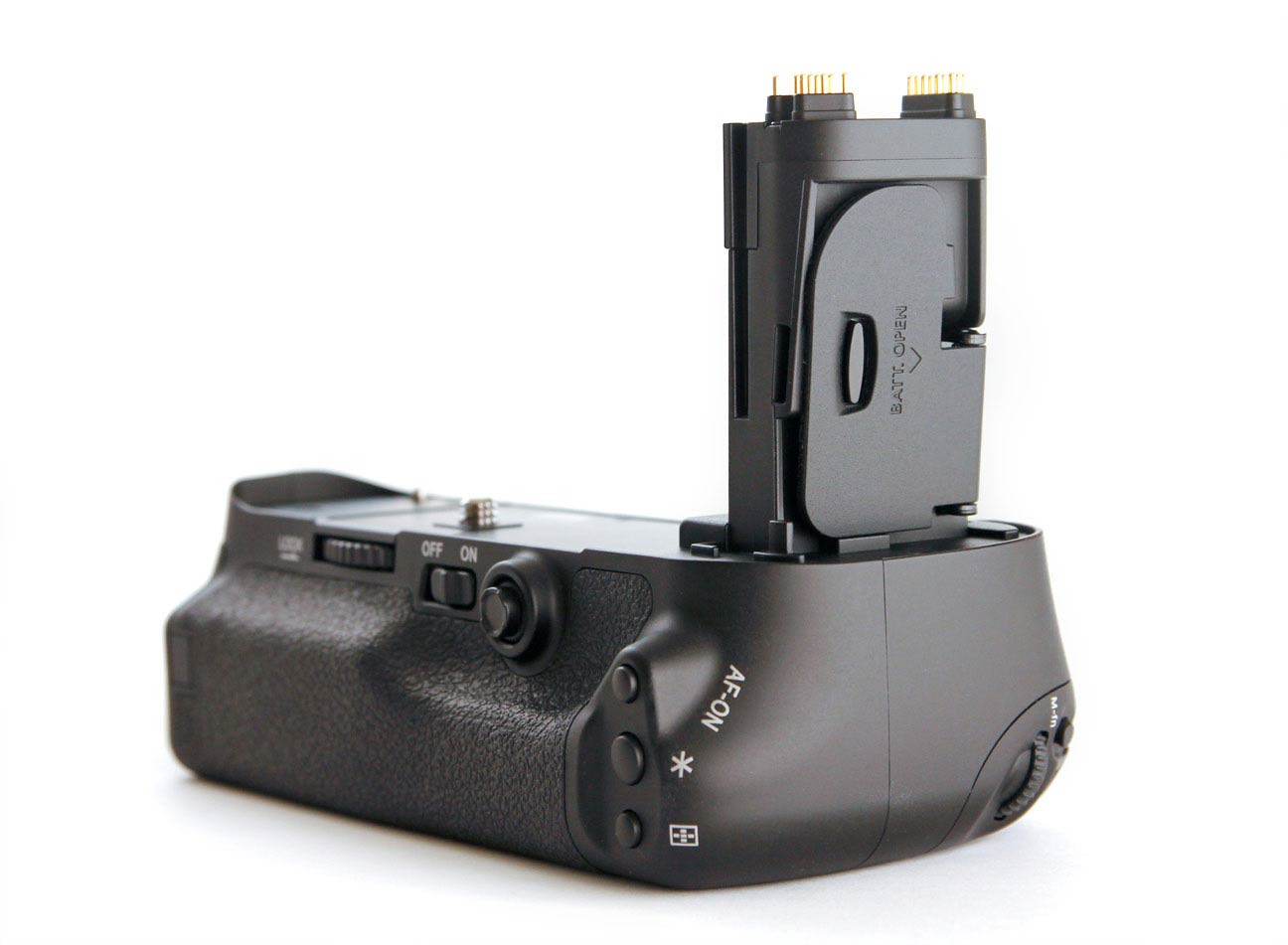The Pixel Vertax E-11 battery grip for the Canon 5D Mark III is the latest in a collection of 3rd-party battery grips that I’ve purchased over the last several years in addition to genuine Canon and Nikon grips. The quality of these aftermarket grips varies dramatically, as do the prices, so I’m always interested to see what shows up when I order another one. Having spent about a week with the Pixel Vertax grip, I am happy to say that it is among the best that I’ve tried, though the price is also higher.
Of course, the price is the only reason that anyone would buy an aftermarket grip, generally speaking, so let me start there. The Canon BG-E11 grip for the 5D Mark III currently costs $, while the Pixel Vertax 5D Mark III model cost approximately $88 when I ordered it, but is now down to $, providing a savings of over $200, which is hard to ignore. In fact, the price is low enough to make us wonder, “Is it a piece of junk?”
As mentioned previously, my answer is NO, it’s among the best grips I’ve tried, but I’ll provide details about the specifics below.

Build Quality
The Pixel Vertax E-11 feels very solid; it’s not lightweight or creaky, like some aftermarket grips. The shutter button and control dial feel as good as the one on the camera and function equally well, and the control joystick actually works better than the one on my 5D Mark III (which is annoying, frankly). The three thumb buttons have more “click” when pressed than those on the camera, but it’s not problematic, only different.
One of my complaints about an older grip made by Meike was the quality of the AA battery cartridge. After a few months of use, the metal contacts began to loosen and shift in their brackets, and on several occasions, they’ve fallen out completely. The cartridge for the Pixel Vertax E-11 seems much better. The contacts all have additional reinforcements to keep them in place, and the contacts themselves appear to be gold-plated to help stave off corrosion. Additionally, each of the battery compartments is fitted with soft-rubber pads so that the batteries don’t rattle or vibrate.
The contours of the grip fit nicely against the 5D Mark III without leaving any significant gaps, and the tripod-mounting screw locking system works as expected, producing a firm connection. For my hand, the grip is not very comfortable in use; the bottom is too wide and flat. However, I have the same problem with Canon’s grip, so this is not a special problem for the Pixel.
Functionality
I’ve tested the grip with genuine Canon LP-E6 ($59) batteries, as well as aftermarket batteries branded as “Wasabi Power“($15) and “MaximalPower“($23), and mixes of all three, without any errors. In each case, the Canon 5D Mark III was able to communicate with both batteries, or individual batteries when only a single battery is loaded. I also have not experienced any battery-drain while the camera is powered off, though further testing will be necessary on that count; I have not yet had sufficient time for reliable results.
As mentioned above, all of the controls on the grip work at least as well as those on the camera body. The grip provides a shutter button and control dial, three thumb buttons (focus, *, and AF point selection), a controller joystick, and an ON/OFF switch.
Like most modern battery grips, the Pixel E-11 provides a storage compartment for the battery door cover of the Mark III, which also works nicely.

Drawbacks
My main concern about the Pixel E-11 is weather sealing. Although the Canon 5D Mark III has significant weather sealing (though not as much as the 1D X), the Pixel E-11 grip does not appear to have any rubber or foam gaskets in the relevant areas to maintain that seal. There is no seal between the camera’s battery compartment and the grip, and there’s also no apparent seal between the battery cartridge door and the grip, though the fit is moderately tight. In both cases, the electrical contacts are not near the opening in question, but while that may give me a little comfort, it is no substitute for a good seal when working in the rain.
[Update: I learned recently that the Pixel website claims that this grip is weather and dust sealed. Having some concerns about the claim, I decided to test it. I removed the grip from my 5D Mark III, and removed the batteries from the grip, then installed the battery cartridge, and held it under a slow trickle of water in the sink for about 15-20 seconds. I then quickly dried off the outside with a paper towel, and opened it up. It had worked! There was no significant water inside of the door. So, I’m ready to admit that my skepticism was unfounded.]Of course, that’s no drawback if you (a) don’t work outdoors, (b) work outdoors but use a lens that isn’t weather sealed, (c) only work outdoors when the weather permits, or (d) use camera protection (like ThinkTank’s Hydrophobia) to keep your lenses and camera safe.
Finally, though, there’s the matter of build quality. Although the Pixel E-11 is well built for an aftermarket grip, it is still NOT in the same league as a genuine Canon that is constructed from magnesium alloy and the best quality parts (which maintain the same degree of weather sealing as that found in the 5D Mark III body). If I were going to be taking a grip into the field in Africa or remote areas of Alaska, etc, or working as a professional journalist and my job depended on equipment performing reliably with no interruptions, I’d forgo the Pixel and go for the Canon.
For many photographers, though, the Pixel will be fine. Even if it were to break and require replacement, we’d still come out ahead, financially. In fact, even if the second one broke and a third one had to be purchased, we’d still be coming out ahead… and I’ve never managed to break a battery grip (except for the shutter button on a $30 Aputure grip, I suppose).
Battery Drain
Though I have not had any problems with batteries discharging while the camera was not in use, some early users of the grip have reported problems. When asked about these “battery drain” issues, Pixel Enterprises, Hong Kong told Light & Matter that there was a problem with early production models of this grip. Grips with serial numbers between 309095000001 and 309095004240 suffered from an engineering flaw that caused battery drain. After production had begun, however, it was detected and rectified. Pixel offered free repairs to some of those early customers who had the patience to wait for round-trip shipping to China. In any case, currently available models should not suffer any problems with battery drain, according to Pixel, and this has been my experience.
Conclusion
If you’re looking for an aftermarket grip for the 5D Mark III, this is a good way to go: inexpensive, apparently reliable, and well built. I’d recommend it. If any issues come up with it, though, I’ll update this review.




